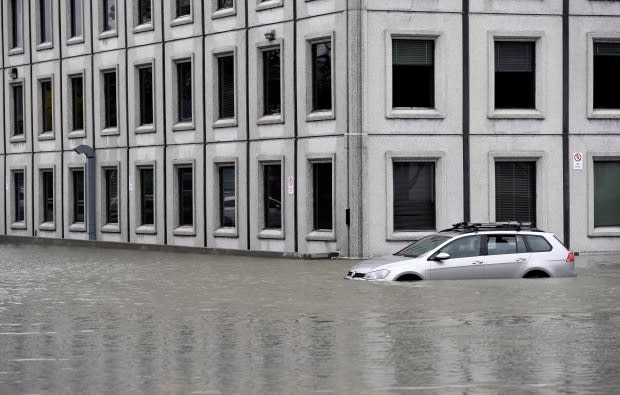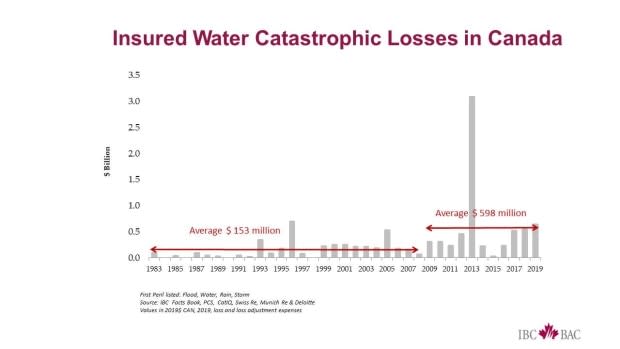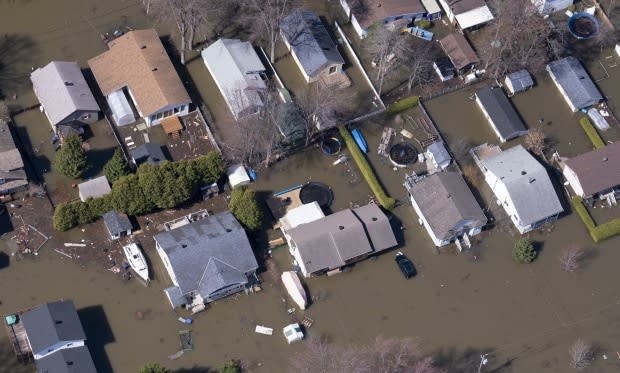Yes, we're getting more extreme rainfall, and it's due to climate change, study confirms

Warmer temperatures due to climate change lead to wetter air, and we've seen more extreme rainfall and flooding across North America. But is there really evidence that the two are related?
Yes, there is.
A new study from researchers at Environment and Climate Change Canada found that climate change has made:
Rainfall more extreme.
Storms with extreme rainfall more frequent.
"We're finding that in North America, we have seen an increase in the frequency and severity of heavy rainfall events. And this is largely due to global warming," said Megan Kirchmeier-Young, a research scientist at Environment and Climate Change Canada and lead author of the study published this week in Proceedings of the National Academy of Sciences.

Already, the resulting flooding has destroyed homes and belongings, leading to billions in damage. And the study projects it will get worse.
"And as we continue to see warming, we will continue to see increases in the frequency and severity of extreme rainfall," Kirchmeier-Young said. "And heavy rainfall is one of the major factors in flash flooding, particularly in urban areas."
The study looked at the largest downpour of each year at sites across the U.S. and Canada and found the amount of rain for that event increased between 1961 and 2010.
Warmer means more moisture
Then it compared the observations to climate models that take into account the 1 C increase in temperature due to human activity since pre-industrial times.
"Physics tells us that a warmer atmosphere can hold more moisture," Kirchmeier-Young said. "That should be reflected as an increase in extreme precipitation in most locations."
Sure enough, the observations and the models were consistent with one another.

The largest increases in extreme precipitation were in the eastern part of North America.
In general across North America, Kirchmeier-Young says storms that would happen:
Once a century without human-caused climate change now happen every 20 years. And if the world gets to 2 C of warming above pre-industrial temperatures, those storms would happen once every five years.
Once every 20 years without human-caused climate change now happen every five years. And they're expected to happen about every other year if the world gets to 2 C of warming above pre-industrial temperatures.
Already, these changes have had a costly impact in the lives of Canadians.
Adding to the evidence
Natalia Moudrak, director of climate resilience at the University of Waterloo Intact Centre on Climate Adaptation noted that catastrophic losses due to extreme weather events have risen sharply. In the early 1980s, they averaged less than $500 million a year.
But from 2009 onward, they exceeded a billion dollars every year except 2015.
The level of flooding is not the only factor affecting losses. Other factors such as property values, paving over natural areas that can absorb rainfall and other kinds of disasters can also contribute. But, Moudrak said, "flooding is by far the No. 1 driver. Water damages are rising in Canada, and it's the elephant in the room."

Rising flood insurance claims were just some of the evidence that already pointed to increased extreme rainfall in North America before the publication of the new study.
Other studies had already found human-caused climate change was linked to increasing extreme rainfall on a global or hemisphere scale.
But Francis Zwiers, director of the Climate Impacts Consortium at the University of Victoria, said the new study is the first to link more frequent extreme rainfall and climate change in North America.
He explained that it gets harder to make those links on a smaller scale. That's because rain is localized and highly variable. That means if you look at data from rain gauges across the world, you can probably only see statistically significant changes in the intensity of precipitation in about 10 per cent or them.
"That's much more than we expect by accident when we're in a world where extreme precipitation is not changing," he said. "But what it's telling you is that when you look at the local scale the chances of seeing this happening in your backyard from the direct evidence that you can measure in your backyard is still very small."

The fact that it now can be measured on the scale of North America is significant, he said.
"When you go to smaller scales, when you are able to answer the question... then it indicates that the evidence is becoming stronger and clearer."
Every 50 years
But he noted a more local scale is more relevant to people's lives, with many implications.
For example, engineering standards are designed to expect building repairs from extreme rainfall and flooding at certain intervals, such as every 50 years."
"If extreme precipitation is becoming more intense, then you're going to have to make those repairs more often … and so then the building becomes more expensive to maintain."
Moudrak says Canadian governments and businesses are already adapting, by updating things like stormwater management guidelines and zoning bylaws and investing in flood resilience retrofits.
"The study, I think, does a really good job on underscoring that this is important work. It has to happen and has to happen today."


